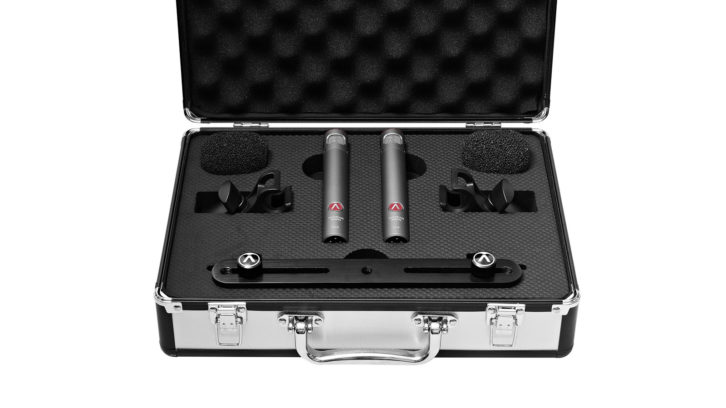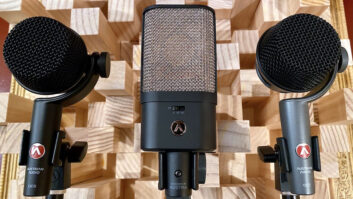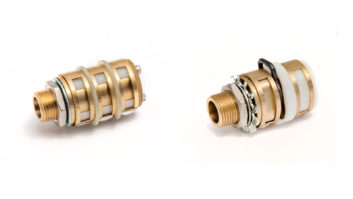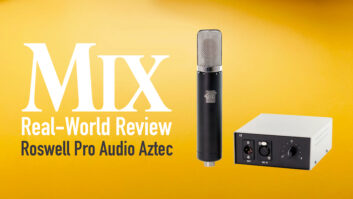
When I reviewed Austrian Audio’s flagship mic, the OC818, I found a team of ex-AKG engineers inspired by classic designs, presenting an exceptionally flat and neutral offering with a few modern design features. Likewise, with the company’s new CC8, I see inspiration by the venerable CK-1 capsule (from the C451), bringing to market the OCC7 capsule as part of this particularly flat and neutral, small-diaphragm, true condenser mic.
AA has substituted polyethylene napthalate for mylar as the new diaphragm material (gold sputtered, 3 microns). This sturdy diaphragm and transformer-less design allows up to 156 dB SPL, accounting for two levels of padding (-10 and -20 dB) available. This attenuation, paired with two levels of highpass filtering (60 Hz or 120 Hz, second order slopes), allows the CC8 to be used in close-mic applications, as well as more typical open-air apps.
Low self-noise for a small-diaphragm condenser (only 16 dB) and exceptionally flat frequency response make for highly detailed reproduction, especially in stereo pairs. All CC8s are hand-tensioned and tuned to within 0.5 dB (at 1 kHz), so all CC8s are dependable parts of a stereo pair.
Lauten Audio LS-308 – A Real-World Review
So pair ’em up! I did: drum overheads (spaced), acoustic guitar (spaced and ORTF), piano (XY and spaced), backup vocals (spaced far apart, with a couple of guys on each mic) and violins (two strings of a trio).
I tried a number of mono apps, too: tambo, handclaps, cajon. I have nothing to report, except that the dynamics were always natural (whether quiet or loud), the frequency response always neutral (plenty-deep bass, the low-mids are actually there and not scooped, ruler-flat mids, natural top-end, no shrillness, no emphasis) and basically linear response in all tests.
I tried the CC8s shoved right in there, too, on snare drum top and bottom, floor tom and kick drum (windscreen recommended). Believe it or not, all were handled without pad or filter, and all sounded surprisingly full and punchy, with smooth definition (quite EQ-able if you’d like some hype) and useful proximity effect.
Austrian Audio Hi-X65 Headphones – A Real-World Review
The pads and filters don’t click confidently like I’d hoped they would, but they sure do sound good. Frankly, I never once “needed” the pads, but with the -10 pad engaged, drums sounded best—quite focused—and even at -20 dB, there was still plenty of output with the same balanced tone.
The 60 Hz filter behaved quite smoothly and gently rolled off the bottom, proving very usable for snare, tom-tom or bass guitar amp. The 120 Hz filter also sounded excellent, but is likely too deep for certain applications. It was spot-on for vocals, “ensemble” acoustic guitar tracks or rumbly situations.
The stereo kit gets solid marks, too, with windscreens, firm mic clips, stereo bar and a sturdy case. About the only thing that could make the CC8s any more useful would be interchangeable capsules (or maybe an omni version?). If you’re looking for KM 184 color, these aren’t for you. These are more like C451s that have become even smoother and more sonically “invisible.” Looks like another winner from Austrian Audio.







